Research on Digital Transformation Based on Complex Systems: Visualization of Knowledge Maps and Construction of a Theoretical Framework
Abstract
:1. Introduction
2. Research Methods and Data Sources
2.1. Research Methods
2.2. Data Sources
3. Overview of Digital Transformation Research
3.1. Trends in Paper Publication
3.2. Publications and Node Literature
3.3. Key Scholars and Country Distribution of Research Results
4. Frontier Analysis of Digital Transformation Research
4.1. Symbiosis of Organization
4.2. Reconstruction of Capabilities
4.3. Value Creation
5. Construction of Theoretical Framework of Digital Transformation
5.1. Core Dimension
5.1.1. The Dimension of Environmental Synergy
5.1.2. The Dimension of Structural Optimization
5.1.3. The Dimension of Function Realization
5.2. Implementation Mechanism
5.2.1. Environmental Synergy Is the Premise of Reconstruction of Capabilities
5.2.2. Effect of Reconstruction of Capabilities on Value Creation
5.2.3. Feedback from Value Creation to Symbiosis of Organization
5.3. Action Mechanism
6. Conclusions
Author Contributions
Funding
Institutional Review Board Statement
Informed Consent Statement
Data Availability Statement
Conflicts of Interest
References
- Wade, M.; Shan, J.L. COVID-19 has accelerated digital transformation, but may have made it harder not easier. MIS Q. Exec. 2020, 19, 213–220. [Google Scholar] [CrossRef]
- Ku, C.C.; Chien, C.F.; Ma, K.T. Digital transformation to empower smart production for industry 3.5 and an empirical study for textile dyeing. Comput. Ind. Eng. 2020, 142, 106297. [Google Scholar] [CrossRef]
- Bharadwaj, A.; El Sawy, O.A.; Pavlou, P.A.; Venkatraman, N. Digital business strategy: Toward a next generation of insights. MIS Q. 2013, 37, 471–482. [Google Scholar] [CrossRef]
- Bin Rahamaddulla, S.R.; Leman, Z.; Bin Baharudin, B.; Ahmad, S.A. Conceptualizing smart manufacturing readiness-maturity model for small and medium enterprise (sme) in malaysia. Sustainability 2021, 13, 9793. [Google Scholar] [CrossRef]
- Castelo-Branco, I.; Cruz-Jesus, F.; Oliveira, T. Assessing industry 4.0 readiness in manufacturing: Evidence for the european union. Comput. Ind. 2019, 107, 22–32. [Google Scholar] [CrossRef]
- Culot, G.; Nassimbeni, G.; Orzes, G.; Sartor, M. Behind the definition of industry 4.0: Analysis and open questions. Int. J. Prod. Econ. 2020, 226, 107617. [Google Scholar] [CrossRef]
- Zhang, J.; Long, J.; von Schaewen, A.M.E. How does digital transformation improve organizational resilience?-findings from pls-sem and fsqca. Sustainability 2021, 13, 11487. [Google Scholar] [CrossRef]
- Yu, J.; Moon, T. Impact of digital strategic orientation on organizational performance through digital competence. Sustainability 2021, 13, 9766. [Google Scholar] [CrossRef]
- Jafari-Sadeghi, V.; Garcia-Perez, A.; Candelo, E.; Couturier, J. Exploring the impact of digital transformation on technology entrepreneurship and technological market expansion: The role of technology readiness, exploration and exploitation. J. Bus. Res. 2021, 124, 100–111. [Google Scholar] [CrossRef]
- Hess, T.; Matt, C.; Benlian, A.; Wiesbock, F. Options for formulating a digital transformation strategy. MIS Q. Exec. 2016, 15, 123–139. [Google Scholar]
- Agarwal, R.; Gao, G.D.; DesRoches, C.; Jha, A.K. The digital transformation of healthcare: Current status and the road ahead. Inf. Syst. Res. 2010, 21, 796–809. [Google Scholar] [CrossRef] [Green Version]
- Majchrzak, A.; Malhotra, A. Effect of knowledge-sharing trajectories on innovative outcomes in temporary online crowds. Inf. Syst. Res. 2016, 27, 685–703. [Google Scholar] [CrossRef] [Green Version]
- Westerman, G.; Calméjane, C.; Bonnet, D.; Ferraris, P.; McAfee, A. Digital Transformation: A Roadmap for Billion-Dollar Organizations; MIT Center for Digital Business and Capgemini Consulting: MA, USA, 2011; Volume 1, pp. 1–68. Available online: https://www.capgemini.com/resources/digital-transformation-a-roadmap-for-billiondollar-organizations/ (accessed on 15 February 2022).
- Gong, Y.W.; Yang, J.; Shi, X.J. Towards a comprehensive understanding of digital transformation in government: Analysis of flexibility and enterprise architecture. Gov. Inf. Q. 2020, 37, 101487. [Google Scholar] [CrossRef]
- Selander, L.; Jarvenpaa, S.L. Digital action repertoires and transforming a social movement organization. MIS Q. 2016, 40, 331–352. [Google Scholar] [CrossRef]
- Carlo, J.L.; Lyytinen, K.; Boland, R.J. Dialectics of collective minding: Contradictory appropriations of information technology in a high-risk project. MIS Q. 2012, 36, 1081–1108. [Google Scholar] [CrossRef] [Green Version]
- Karimi, J.; Walter, Z. The role of dynamic capabilities in responding to digital disruption: A factor-based study of the newspaper industry. J. Manag. Inform. Syst. 2015, 32, 39–81. [Google Scholar] [CrossRef]
- Svahn, F.; Mathiassen, L.; Lindgren, R.; Kane, G.C. Mastering the digital innovation challenge. MIT Sloan Manag. Rev. 2017, 58, 14–16. [Google Scholar]
- Matt, C.; Hess, T.; Benlian, A. Digital transformation strategies. Bus. Inf. Syst. Eng. 2015, 57, 339–343. [Google Scholar] [CrossRef]
- Vial, G. Understanding digital transformation: A review and a research agenda. J. Strateg. Inf. Syst. 2019, 28, 118–144. [Google Scholar] [CrossRef]
- Kraus, S.; Breier, M.; Dasi-Rodriguez, S. The art of crafting a systematic literature review in entrepreneurship research. Int. Entrep. Manag. J. 2020, 16, 1023–1042. [Google Scholar] [CrossRef] [Green Version]
- Nwaiwu, F. Review and comparison of conceptual frameworks on digital business transformation. J. Compet. 2018, 10, 86–100. [Google Scholar] [CrossRef] [Green Version]
- Kraus, S.; Durst, S.; Ferreira, J.J.; Veiga, P.; Kailer, N.; Weinmann, A. Digital transformation in business and management research: An overview of the current status quo. Int. J. Inf. Manag. 2022, 63, 102466. [Google Scholar] [CrossRef]
- Tranfield, D.; Denyer, D.; Smart, P. Towards a methodology for developing evidence-informed management knowledge by means of systematic review. Br. J. Manag. 2003, 14, 207–222. [Google Scholar] [CrossRef]
- Guo, X.R.; Li, X.; Guo, Y.M. Mapping knowledge domain analysis in smart education research. Sustainability 2021, 13, 13234. [Google Scholar] [CrossRef]
- Ping, Q.; He, J.G.; Chen, C.M. How many ways to use citespace? A study of user interactive events over 14 months. J. Assoc. Inf. Sci. Technol. 2017, 68, 1234–1256. [Google Scholar] [CrossRef]
- Small, H.; Upham, P. Citation structure of an emerging research area on the verge of application. Scientometrics 2009, 79, 365–375. [Google Scholar] [CrossRef]
- Chen, C.M. Citespace ii: Detecting and visualizing emerging trends and transient patterns in scientific literature. J. Am. Soc. Inf. Sci. Technol. 2006, 57, 359–377. [Google Scholar] [CrossRef] [Green Version]
- Lakemond, N.; Holmberg, G.; Pettersson, A. Digital transformation in complex systems. IEEE Trans. Eng. Manag. 2021, 1–13. [Google Scholar] [CrossRef]
- Gfrerer, A.; Hutter, K.; Fuller, J.; Strohle, T. Ready or not: Managers’ and employees’ different perceptions of digital readiness. Calif. Manag. Rev. 2021, 63, 23–48. [Google Scholar] [CrossRef]
- Hou, G.M.; Shi, X. Speed up the construction of organizational management systems theory for contemporary chinese practice. Sci. Decis. Mak. 2021, 28, 54–74. [Google Scholar]
- Hou, G.M. Discussion on the construction of organizational management systematics based on china’s practice in innovational development. China Soft Sci. 2018, 33, 105–116. [Google Scholar]
- Khanagha, S.; Ansari, S.; Paroutis, S.; Oviedo, L. Mutualism and the dynamics of new platform creation: A study of cisco and fog computing. Strateg. Manag. J. 2020, 43, 476–506. [Google Scholar] [CrossRef] [Green Version]
- Porter, M.E.; Heppelmann, J.E. How smart, connected products are transforming competition. Harv. Bus. Rev. 2014, 92, 64–88. [Google Scholar]
- Reinartz, W.; Wiegand, N.; Imschloss, M. The impact of digital transformation on the retailing value chain. Int. J. Res. Mark. 2019, 36, 350–366. [Google Scholar] [CrossRef]
- Tortorella, G.L.; Vergara, A.M.; Garza-Reyes, J.A.; Sawhney, R. Organizational learning paths based upon industry 4.0 adoption: An empirical study with brazilian manufacturers. Int. J. Prod. Econ. 2020, 219, 284–294. [Google Scholar] [CrossRef]
- Visan, M.; Ciurea, C. Smart city: Concepts and two relevant components. Int. J. Comput. Commun. Control 2020, 15, 9. [Google Scholar] [CrossRef] [Green Version]
- Soto-Acosta, P. Covid-19 pandemic: Shifting digital transformation to a high-speed gear. Inf. Syst. Manag. 2020, 37, 260–266. [Google Scholar] [CrossRef]
- Warner, K.S.R.; Wager, M. Building dynamic capabilities for digital transformation: An ongoing process of strategic renewal. Long Range Plan. 2019, 52, 326–349. [Google Scholar] [CrossRef]
- Endres, H.; Helm, R.; Dowling, M. Linking the types of market knowledge sourcing with sensing capability and revenue growth: Evidence from industrial firms. Ind. Mark. Manag. 2020, 90, 30–43. [Google Scholar] [CrossRef]
- Braun, T.; Sydow, J. Selecting organizational partners for interorganizational projects: The dual but limited role of digital capabilities in the construction industry. Proj. Manag. J. 2019, 50, 398–408. [Google Scholar] [CrossRef]
- Tan, F.T.C.; Ondrus, J.; Tan, B.N.; Oh, J. Digital transformation of business ecosystems: Evidence from the korean pop industry. Inf. Syst. J. 2020, 30, 866–898. [Google Scholar] [CrossRef]
- Ylijoki, O.; Porras, J. A recipe for big data value creation. Bus. Process Manag. J. 2019, 25, 1085–1100. [Google Scholar] [CrossRef]
- Gastaldi, L.; Appio, F.P.; Corso, M.; Pistorio, A. Managing the exploration-exploitation paradox in healthcare: Three complementary paths to leverage on the digital transformation. Bus. Process Manag. J. 2018, 24, 1200–1234. [Google Scholar] [CrossRef]
- Taylor, S.A.; Hunter, G.L.; Zadeh, A.H.; Delpechitre, D.; Lim, J.H. Value propositions in a digitally transformed world. Ind. Mark. Manag. 2020, 87, 256–263. [Google Scholar] [CrossRef]
- Buer, S.V.; Strandhagen, J.W.; Semini, M.; Strandhagen, J.O. The digitalization of manufacturing: Investigating the impact of production environment and company size. J. Manuf. Technol. Manag. 2021, 32, 621–645. [Google Scholar] [CrossRef]
- Dagnino, G.B.; Picone, P.M.; Ferrigno, G. Temporary competitive advantage: A state-of-the-art literature review and research directions. Int. J. Manag. Rev. 2021, 23, 85–115. [Google Scholar] [CrossRef]
- Park, J.-H.; Kim, Y.B. Factors activating big data adoption by korean firms. J. Comput. Inf. Syst. 2019, 61, 285–293. [Google Scholar] [CrossRef]
- Uslu, B.C.; Okay, E.; Dursun, E. Analysis of factors affecting iot-based smart hospital design. J. Cloud Comput.-Adv. Syst. Appl. 2020, 9, 23. [Google Scholar] [CrossRef]
- Pflaum, A.A.; Golzer, P. The iot and digital transformation: Toward the data-driven enterprise. IEEE Pervasive Comput. 2018, 17, 87–91. [Google Scholar] [CrossRef]
- van Noordt, C.; Misuraca, G. Exploratory insights on artificial intelligence for government in europe. Soc. Sci. Comput. Rev. 2020, 38, 1–19. [Google Scholar] [CrossRef]
- Meske, C.; Kissmer, T.; Stieglitz, S. Bridging formal barriers in digital work environments-investigating technology-enabled interactions across organizational hierarchies. Telemat. Inform. 2020, 48, 101342. [Google Scholar] [CrossRef]
- Del Giudice, M.; Chierici, R.; Mazzucchelli, A.; Fiano, F. Supply chain management in the era of circular economy: The moderating effect of big data. Int. J. Logist. Manag. 2021, 32, 337–356. [Google Scholar] [CrossRef]
- Pathak, S.D.; Wu, Z.; Johnston, D. Toward a structural view of co-opetition in supply networks. J. Oper. Manag. 2014, 32, 254–267. [Google Scholar] [CrossRef]
- Bordeleau, F.E.; Mosconi, E.; de Santa-Eulalia, L.A. Business intelligence and analytics value creation in industry 4.0: A multiple case study in manufacturing medium enterprises. Prod. Plan. Control 2020, 31, 173–185. [Google Scholar] [CrossRef]
- Jin, J.; Ma, L.; Ye, X.W. Digital transformation strategies for existed firms: From the perspectives of data ownership and key value propositions. Asian J. Technol. Innov. 2020, 28, 77–93. [Google Scholar] [CrossRef]
- Dressler, M.; Paunovic, I. Converging and diverging business model innovation in regional intersectoral cooperation–exploring wine industry 4.0. Eur. J. Innov. Manag. 2020, 24, 1625–1652. [Google Scholar] [CrossRef]
- Diller, M.; Asen, M.; Spath, T. The effects of personality traits on digital transformation: Evidence from german tax consulting. Int. J. Account. Inf. Syst. 2020, 37, 100455. [Google Scholar] [CrossRef]
- de Mendonca, C.M.C.; de Andrade, A.M.V. Use of iot, big data and artificial intelligence in dynamic capabilities: A comparative study between the cities of brazil and portugal. Inf. Soc.-Estud. 2019, 29, 37–60. [Google Scholar]
- Michaelis, B.; Rogbeer, S.; Schweizer, L.; Özleblebici, Z. Clarifying the boundary conditions of value creation within dynamic capabilities framework: A grafting approach. Rev. Manag. Sci. 2020, 15, 1797–1820. [Google Scholar] [CrossRef]
- Sandberg, J.; Holmstrom, J.; Lyytinen, K. Digitization and phase transitions in platform organizing logics: Evidence from the process automation industry. MIS Q. 2020, 44, 129–153. [Google Scholar] [CrossRef]
- Li, F. Leading digital transformation: Three emerging approaches for managing the transition. Int. J. Oper. Prod. Manag. 2020, 40, 809–817. [Google Scholar] [CrossRef]
- Saarikko, T.; Westergren, W.H.; Blomquist, T. Digital transformation: Five recommendations for the digitally conscious firm. Bus. Horiz. 2020, 63, 825–839. [Google Scholar] [CrossRef]
- Hackius, N.; Petersen, M. Translating high hopes into tangible benefits: How incumbents in supply chain and logistics approach blockchain. IEEE Access 2020, 8, 34993–35003. [Google Scholar] [CrossRef]
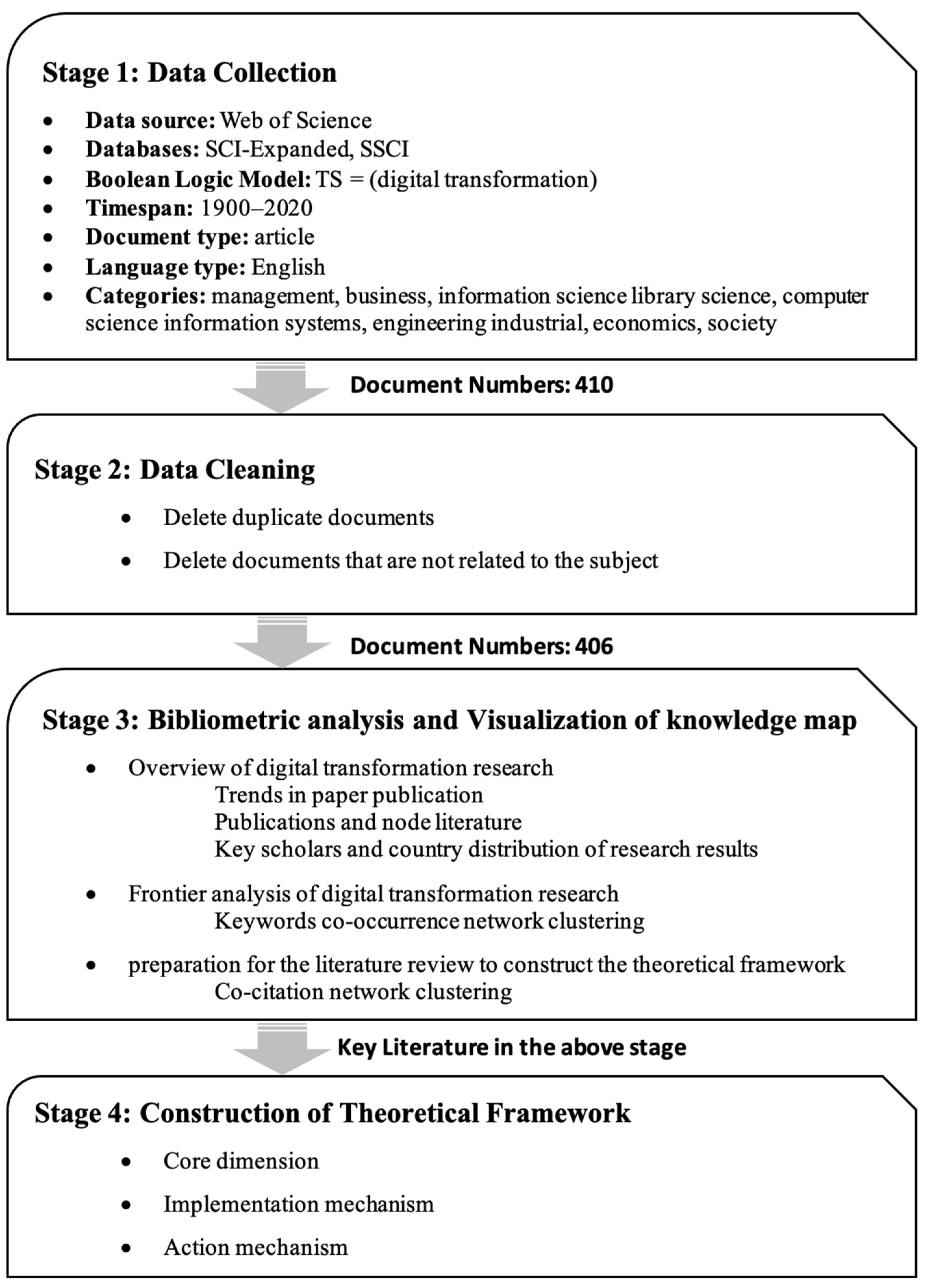


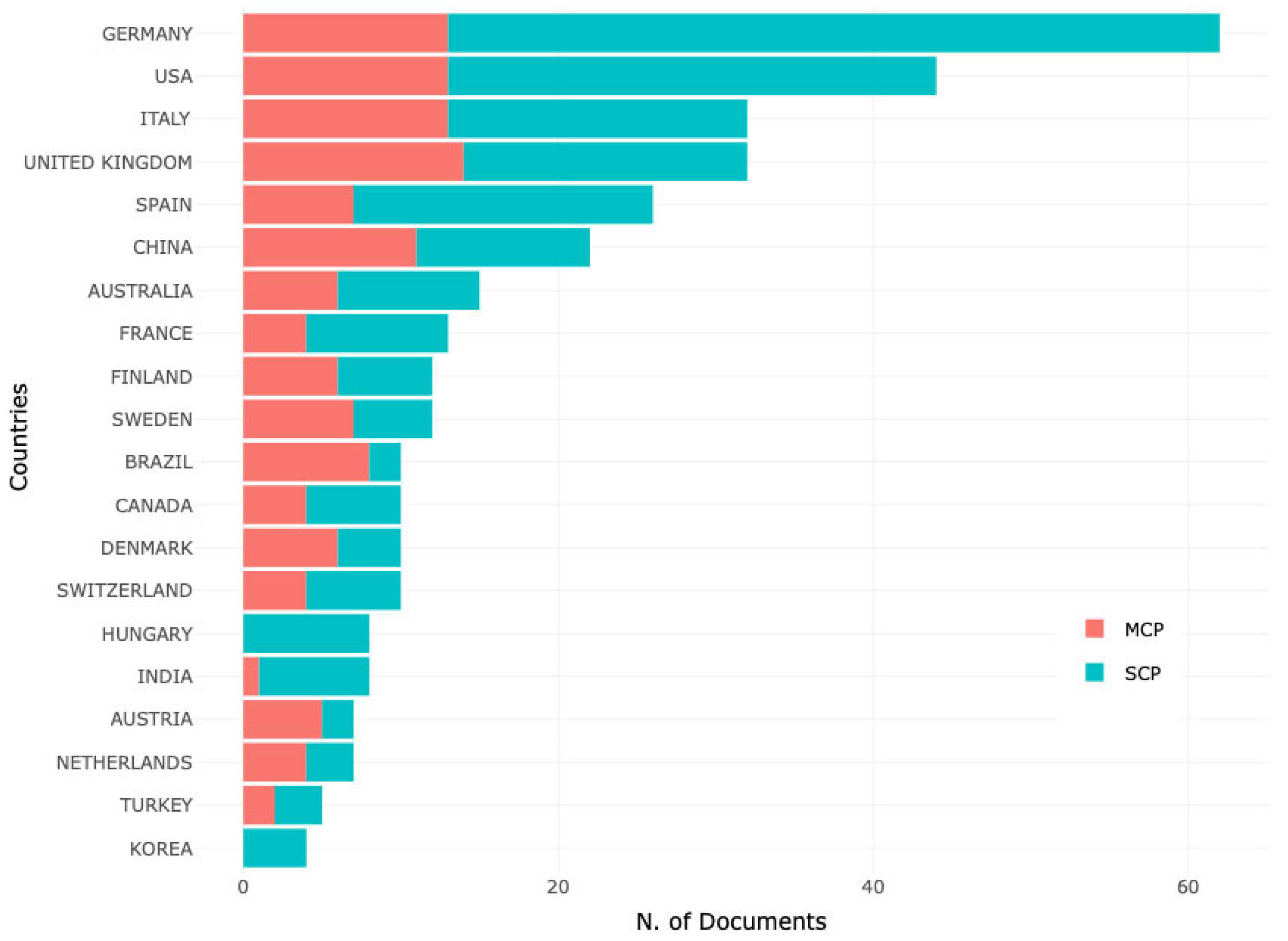
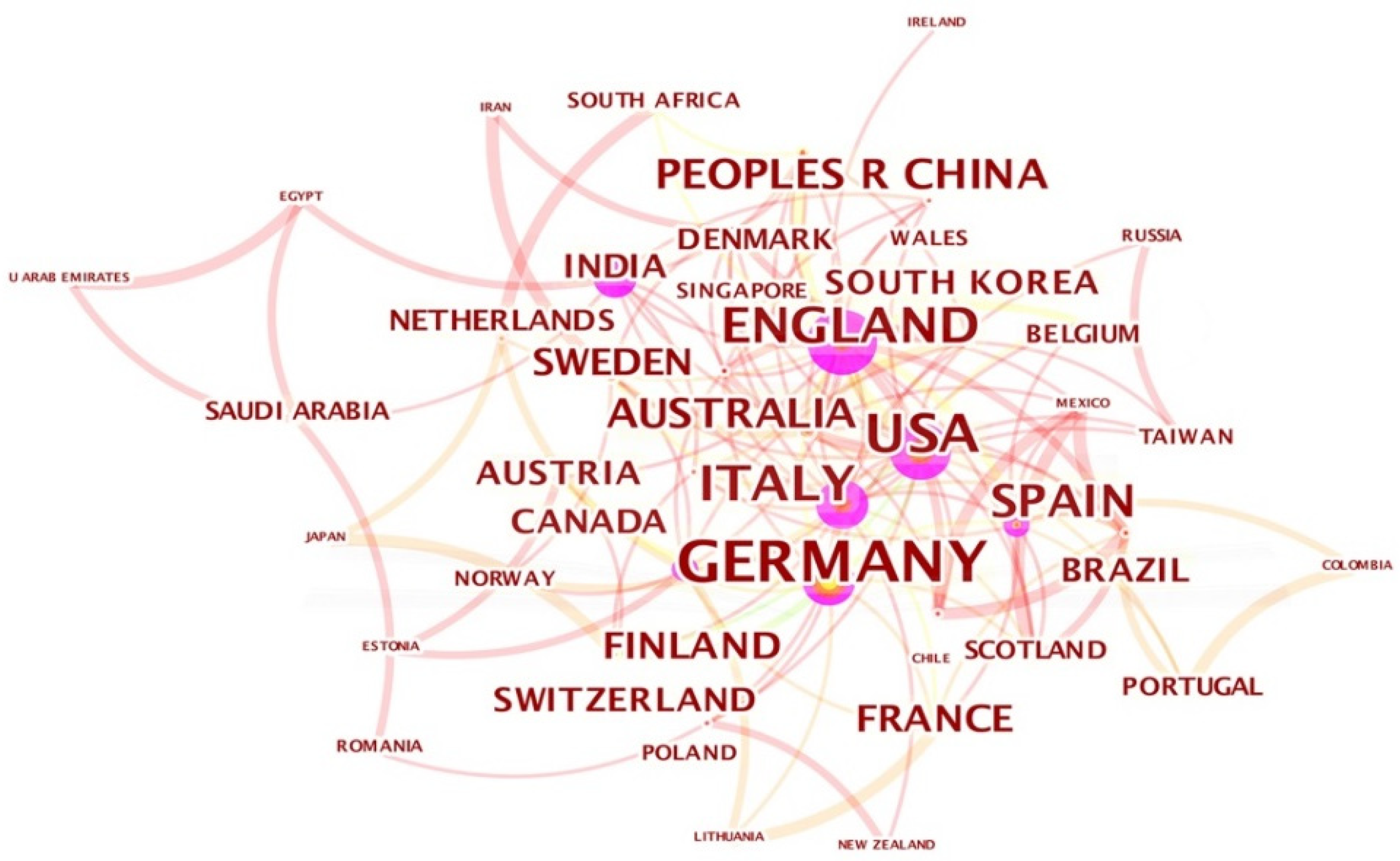

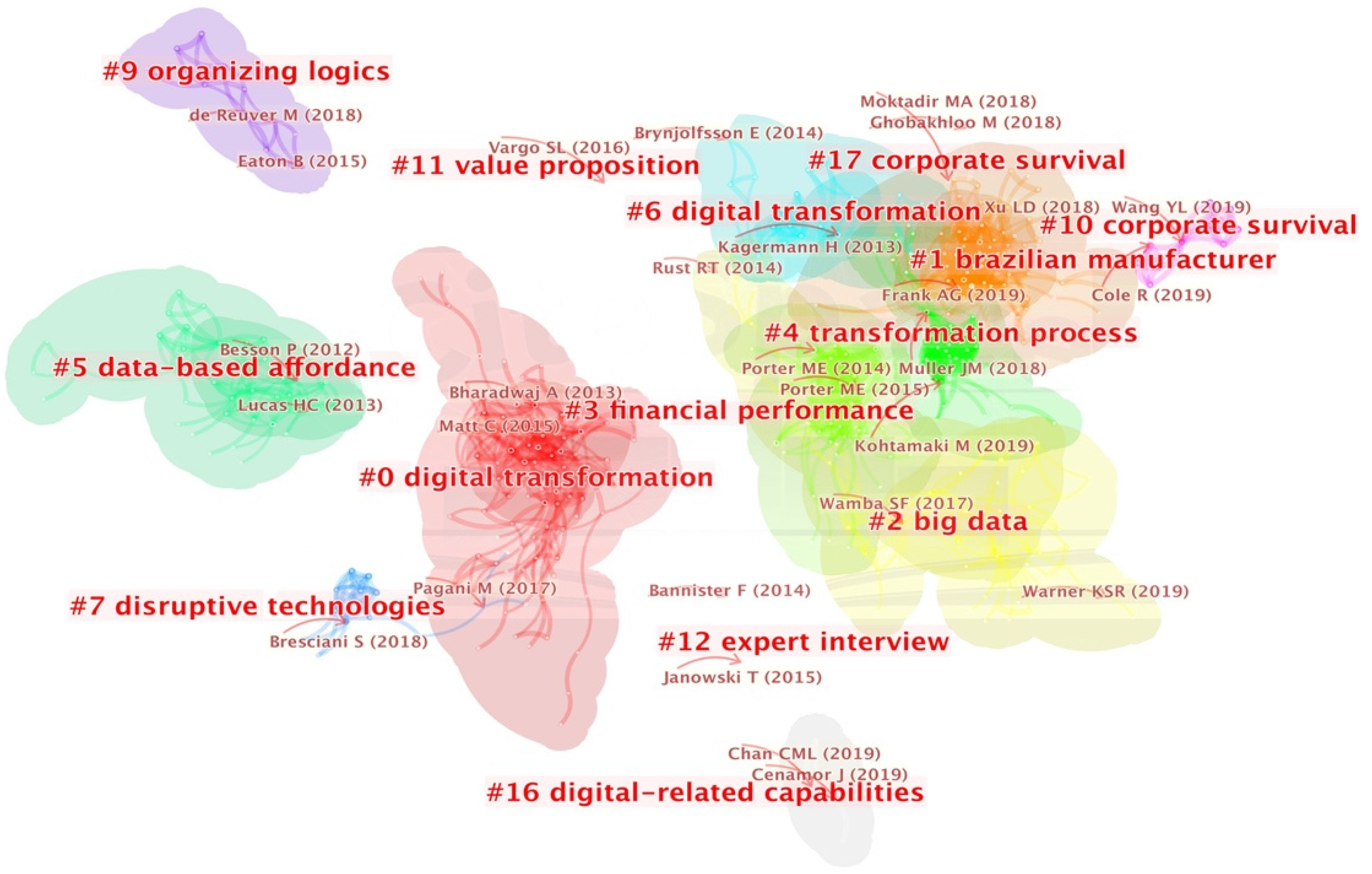
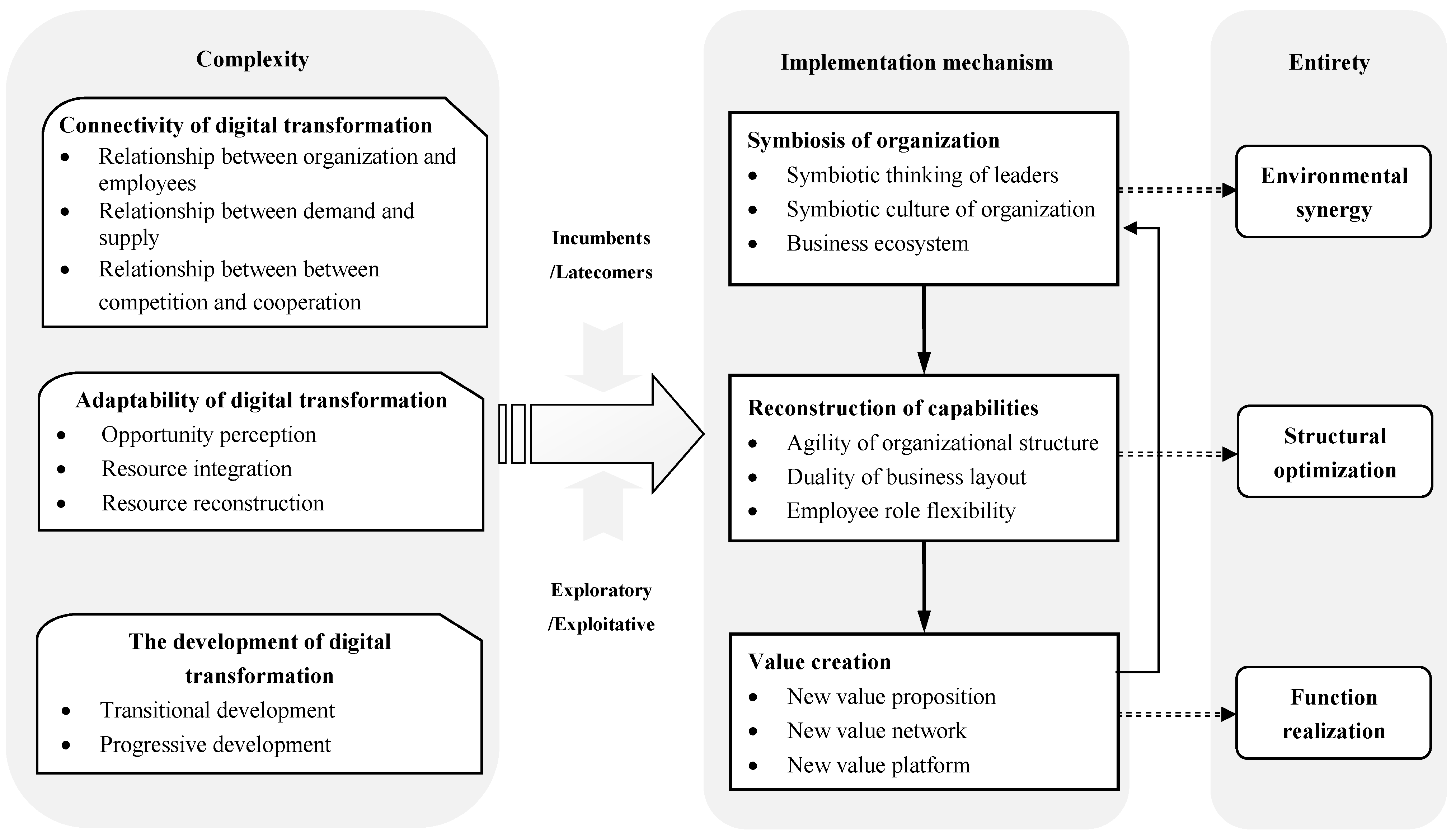
| Concept Definition | Author (Year) |
|---|---|
| Use technology to fundamentally improve the performance or influence of enterprises. | Westerman et al. (2011) |
| Digital technologies (seen as a combination of information, computing, communication and connectivity technologies) are fundamentally changing business strategies, business processes, corporate capabilities, products and services, and expanding key inter-enterprise relationships in business networks. | Bharadwaj et al. (2013) |
| Use new digital technologies (social media, mobile, analytics, or embedded devices) to achieve significant business improvements (such as enhancing the customer experience, simplifying operations, or creating new business models). | Fitzgerald et al. (2014) |
| The digital transformation strategy is a blueprint that supports the transformation of enterprise management due to the integration of computing intelligence technology and the operation after transformation. | Matt et al. (2015) |
| Digital transformation refers to the changes brought about by computing intelligence technology to the business model of enterprises. These changes will lead to changes in product or organizational structure, or process automation. These changes can be seen from the growing demand for Internet based media, which has led to changes in the whole business model (e.g., in the music industry). | Hess et al. (2016) |
| Use new digital technologies such as social media, mobile, analytics, or embedded devices to achieve significant business improvements such as enhancing the customer experience, simplifying operations, or creating new business models. | Singh et al. (2017) |
| Digital transformation is the process of improving entities by triggering significant changes in entity attributes through the combination of information, computing, communication and connectivity technologies. | Vial et al. (2019) |
| Digital transformation is a fundamental change process realized by computing intelligence technology, which aims to bring fundamental improvement and innovation to entities (for example, an organization, a business network, an industry, or society) and create value for their stakeholders through the strategic use of their key resources and capabilities. | Gong et al. (2021) |
| Source Publication | Impact Factor | Records | % of 406 |
|---|---|---|---|
| IEEE Access | 3.745 | 15 | 3.69 |
| Mis Quarterly Executive | 4.088 | 15 | 3.69 |
| Technological Forecasting and Social Change | 5.846 | 15 | 3.69 |
| Production Planning & Control | 3.605 | 11 | 2.7 |
| Business Horizons | 3.444 | 10 | 2.46 |
| Business Process Management Journal | 2.121 | 10 | 2.46 |
| California Management Review | 3.909 | 10 | 2.46 |
| Government Information Quarterly | 5.098 | 9 | 2.21 |
| Industrial Marketing Management | 4.695 | 9 | 2.21 |
| International Journal of Information Management | 8.21 | 8 | 1.97 |
| Title | Author (Year) | Total Citations |
|---|---|---|
| The Digital Transformation of Healthcare: Current Status and the Road Ahead | Agarwal et al. (2010) | 316 |
| Digital Transformation Strategies | Matt et al. (2015) | 276 |
| Innovation Diffusion in Global Contexts: Determinants of Post-Adoption Digital Transformation of European Companies | Zhu et al. (2006) | 257 |
| Industry 4.0 Technologies: Implementation Patterns in Manufacturing Companies | Frank et al. (2019) | 248 |
| Options for Formulating a Digital Transformation Strategy | Hess et al. (2016) | 160 |
| Open Innovation: Research, Practices, and Policies | Bogers et al. (2018) | 130 |
| The Sharing Economy: Your Business Model’s Friend or Foe? | Kathan et al. (2016) | 117 |
| The Role of Dynamic Capabilities in Responding to Digital Disruption: A Factor-Based Study of the Newspaper Industry | Karimi et al. (2015) | 106 |
| Digital Innovation and Transformation: an Institutional Perspective | Hinings et al. (2018) | 105 |
| Building Dynamic Capabilities for Digital Transformation: an Ongoing Process of Strategic Renewal | Warner et al. (2019) | 100 |
| Author | Research Institutions | Country | Records |
|---|---|---|---|
| Hess, T. | University of Munich | Germany | 7 |
| Roth, S. | La Rochelle Business School; University of Turku | France; Finland | 3 |
| Benlian, A. | Technical University of Darmstadt | Germany | 3 |
| Holmstrom, J. | Aalto University | Finland | 3 |
| Szalavetz, A. | Hungarian Academy of Sciences | Hungary | 3 |
| Wiesbock, F. | University of Munich | Germany | 3 |
| Alange, S. | Chalmers University of Technology | Sweden | 2 |
| Andriole, S.J. | Villanova University | USA | 2 |
| Ayala, N.F. | Federal University of Rio Grande do Sul | Portugal | 2 |
| Baptistia, J. | Lancaster University | UK | 2 |
| Keyword | Cluster | Thematic Area |
|---|---|---|
| ICT, blockchain productivity | digital economy | symbiosis of organization |
| context, exploration, smart city, e-government, SME, firm | public service | |
| boundary resource, digital platform, alignment | business ecosystem | |
| pandemic, sustainability, COVID-19 | related challenge | |
| Optimization, cloud computing | IoT system | |
| absorptive capacity | business ecosystem | reconstruction of capabilities |
| IoT, data analytics, cloud, artificial intelligence, complexity | big data | |
| digital strategy, implementation, capabilities, decision making | platform logic | |
| industry 4.0, big data, digital servitization, maturity model | smart manufacturing | |
| competition, information system, platform, knowledge, service, value co-creation | value proposition | value creation |
| value creation, product development, competitive advantage | business ecosystem | |
| organization, adoption | platform logic |
Publisher’s Note: MDPI stays neutral with regard to jurisdictional claims in published maps and institutional affiliations. |
© 2022 by the authors. Licensee MDPI, Basel, Switzerland. This article is an open access article distributed under the terms and conditions of the Creative Commons Attribution (CC BY) license (https://creativecommons.org/licenses/by/4.0/).
Share and Cite
Xu, X.; Hou, G.; Wang, J. Research on Digital Transformation Based on Complex Systems: Visualization of Knowledge Maps and Construction of a Theoretical Framework. Sustainability 2022, 14, 2683. https://doi.org/10.3390/su14052683
Xu X, Hou G, Wang J. Research on Digital Transformation Based on Complex Systems: Visualization of Knowledge Maps and Construction of a Theoretical Framework. Sustainability. 2022; 14(5):2683. https://doi.org/10.3390/su14052683
Chicago/Turabian StyleXu, Xiurui, Guangming Hou, and Junpeng Wang. 2022. "Research on Digital Transformation Based on Complex Systems: Visualization of Knowledge Maps and Construction of a Theoretical Framework" Sustainability 14, no. 5: 2683. https://doi.org/10.3390/su14052683
APA StyleXu, X., Hou, G., & Wang, J. (2022). Research on Digital Transformation Based on Complex Systems: Visualization of Knowledge Maps and Construction of a Theoretical Framework. Sustainability, 14(5), 2683. https://doi.org/10.3390/su14052683







